Yearly Archives: 2019
5 Signs You Need a New Mattress
Finding the right time to purchase a new mattress can be tricky. Many don’t actively think about it, and find themselves getting poor sleep without being able to pinpoint the cause. Here are 5 signs that might mean it’s time to replace your mattress.

You can see impressions where you sleep
There is a certain amount of normal wear that is to be expected with a mattress. Much like a nice pair of shoes, a mattress will break in to conform to your individual body. But if your mattress has a depression greater than an inch and a half, or there is a hump in the middle of your mattress, it may be time to replace it.

You wake up sore
If you wake up sore or stiff, and loosen up within the first few hours of the day, your mattress might be the culprit. Pain from a bad mattress usually recurs every morning, and dissipates throughout the day.

Sleeping in a hotel-or anywhere else-is more comfortable
Many people don’t get good sleep when they’re in an unfamiliar environment. But if you find your deepest snooze anywhere but your bed, it’s a telltale sign the bed needs replacement.

You feel tired even after getting a full night sleep
Just because you get a lot of sleep, it doesn’t mean it’s good sleep. An old or bad mattress can create pinch point when you sleep, keeping you from settling in and getting comfortable enough for a deep rest.

Your mattress is giving you allergy symptoms
Over time, mattresses gather dust, dust mites, skin and hair cells from our bodies (yuck). The average queen mattress actually doubles in weight in ten year, mainly due to this. If you find yourself with a scratchy throat, or sneezing every time you wake up, it might be your mattress.
Is a latex mattress healthier?

When you spend a third of your life on your mattress, what’s inside is of utmost importance. There are any number of things that can be in a mattress, from poly-foam to even horsehair. Latex is one of the healthiest materials used inside any mattress. Here’s why.
Latex comes from the rubber tree
You can sleep well knowing latex is a plant based material. Most foams used in mattresses are petroleum based. Latex is harvested from the rubber tree, and put through cleaning processes to become the comfort foam in your mattress.
Latex has an open cell structure
Time to get a little scientific. Latex has an open cell structure, while memory foams have a closed cell structure. This means latex operates more like a spring-where it can easily and quickly return to its original shape. Because of its structure, latex is naturally cool, resilient, and soft.
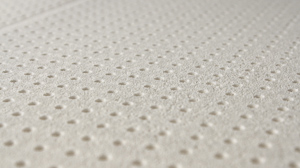
It’s naturally anti-microbial and hypoallergenic
The cellular structure of foam is inhospitable to pesky things like bacteria and dust mites. Latex also does not hold moisture or get hot, making it a very clean environment.
Latex is a fast responding foam
Remember the old memory foam commercials where someone would press their hand in, and the imprint of their hand would stay on the foam? Latex is the opposite of that. It cradles you, rather than letting you sink in and get stuck.
While all latex is a healthy option, not all is made equal. Make sure the latex in your mattress is certified environmentally friendly.
Your Sleep Tracker Might Be Ruining Your Sleep
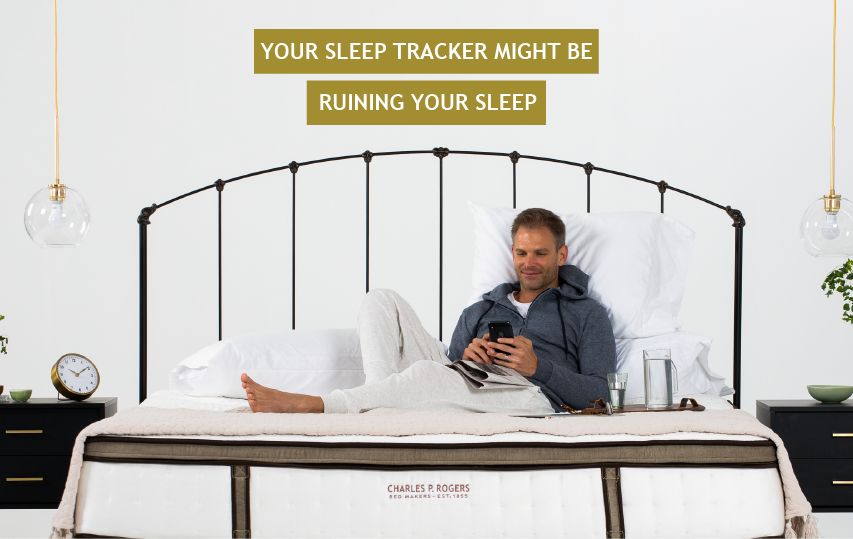
Let’s face it-good sleep is now a fad. We’ve listened to the wise wisdom telling us to incorporate sleep into our lives as one of the most imperative forms of self-care. Merchandisers have listened too, and given us everything from an ever-growing mattress market, to wearable sleep tracking devices. Fitness trackers have become ubiquitous forms of wearable tech, and most have the ability to track sleep stages, length, and deepness to help you on your infinite quest for good rest. But are these helpful tools actually…helpful?

Most sleep trackers measure sleep by monitoring your movement. The problem is, this data isn’t always accurate. And while some more advanced trackers even take heartbeat into account, the two most definitive measures of you sleep are a sleep study, and yourself. That’s right-self reporting tends to give you a more accurate picture of your sleep than sleep trackers.
What does this mean for your sleep? First off, if you’re obsessively relying on your sleep tracker data stream with an exclusive goal of sleeping sounder, you may be exacerbating your anxiety needlessly. A recent study coined the term “Orthosomnia” for this phenomenon of being so preoccupied with improving your sleep data, you’re ruining your sleep in the process. This particular study analyzed people who sought treatment based on problems they thought they had, according to their sleep trackers.
The key to wearable sleep trackers is finding a healthy balance. Use them to track quantity, rather than quality. See for yourself if you feel better with 7 hours, or 8 hours of sleep. If you think you may have a problem with your sleep, see your doctor for an official diagnosis. Of course, we still think the best way to join the sleep fad is with a supportive new mattress, but we might be biased.
10 Tips for Better Summer Sleep

We might be one day past the summer solstice, but we still have plenty long and sunny summer days ahead of us. While summer is the time many of us feel most relaxed, this season can still wreak havoc on your sleep. Between early sunrise, hot nights, and activities that might get you off your schedule, it might just be one of the most difficult seasons for sleep. Here we have ten tips to get the most out of your summer nights.
Try to keep bedtime consistent.
Summer is often the time for vacations and staying out later. But this doesn’t mean you can’t keep a consistent schedule. Think about shifting your bedtime later to accommodate, while still keeping it relatively the same every night.
2. Give yourself time to wind down.
The late sunsets can interfere with your natural body rhythms, meaning you won’t be as tired at night. Consider closing your curtains and dimming the light in your home at least 2 hours before bed.

3. Eat a light dinner.
This goes for any time of the year, but is especially important in the summer. Many of us are guilty of just wanting to spend one more hour in the evening daylight, and might put off dinner until later than we would in the winter. After all, dinner is the sign of the end of the night for many. If you eat later, be sure to make it a light meal to avoid stomach discomfort.
4. Pay attention to bed linen.
It’s time to put the flannel away, and opt for more cooling fabrics like cotton and linen. Not only will it get you in the summer mood, but it will keep you as cool as possible.
5. Dress right
The same goes for pajamas as it does bed linens. Opt for t-shirts and shorts, rather than heavier loungewear. Make sure you can move freely at night. Consider being adventurous, and sleeping in your underwear-or even the nude!
6. Sleep with wet hair
If you’re a hot sleeper, summer can be a nightmare for you. One of the quickest ways to cool down is to dampen your hair. Having a cool head can make your entire body feel cooler.
7. Use a makeshift air conditioner
Put ice in a larger, shallow dish, and place it in front of a fan. The cool air will rise and be circulated by the fan, giving you a cheap and easy way of cooling your room.
8. Invest in a dehumidifier
The old saying goes, it’s not the heat, it’s the humidity. It might get annoying hearing literally everyone say this, but it is true. Take some moisture out of the air in your bedroom for deeper, cooler sleep.

9. Put up room darkening curtains
Not only does it get dark later at night during the summer, but sunrise starts as early as 5:30 in the morning. If you, like many of us would rather sleep later than that shut the sun out with room darkening curtains.
10. Listen to the sound of rain
If all else fails, and the summer heat has got you anxious, try calming methods like listening to the sound of rain. If you can use that to get to sleep, chances are you’ll stay asleep.
5 Best Plants for the Bedroom
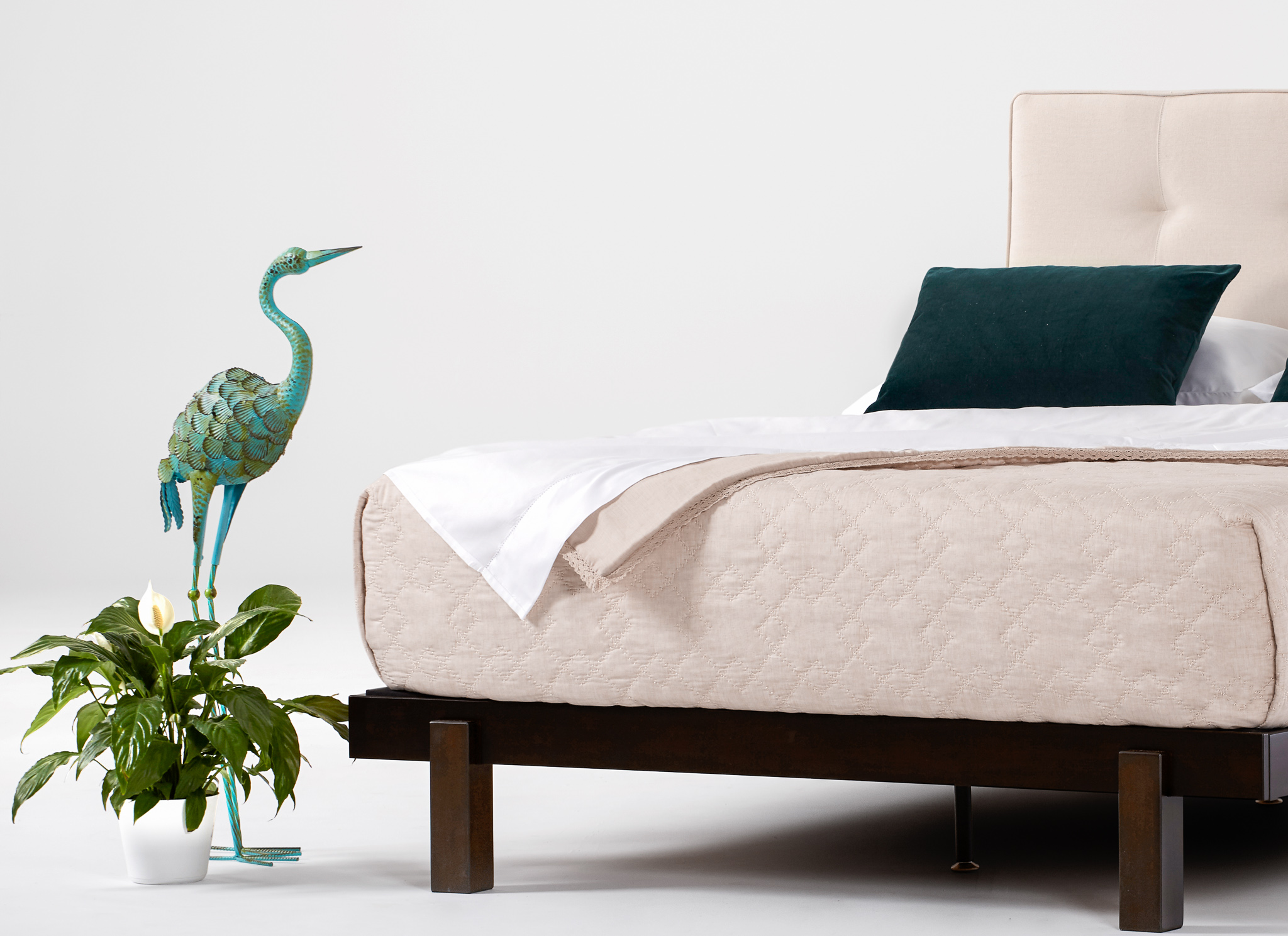
The best way to elevate the decor of any space is to add some greenery, and the bedroom is no exception. Since you statistically spend a third of your life sleeping, you also spend almost that amount of time in your bedroom. Your bedroom should be your sanctuary, so treat yourself to some air purifying house plants that will keep you calm and centered. Here are the best plants to build your bedroom oasis:
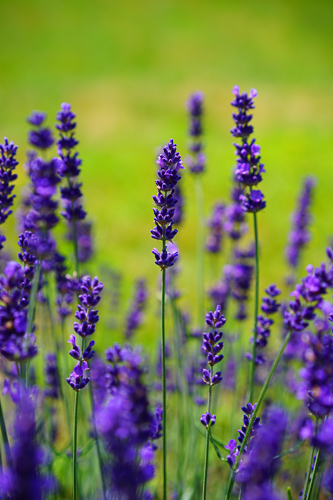
Live Lavender
Lavender is often used in aromatherapy to relax and help with sleep, so having a fragrant lavender plant in your bedroom is a certain way to get some better rest. While it’s grown outdoors in most situations, it’s entirely possible to keep it as a houseplant. Make sure they have enough light-place them in a bright south-facing window. Add some gravel to the bottom of your pot, terra cotta pots are best.
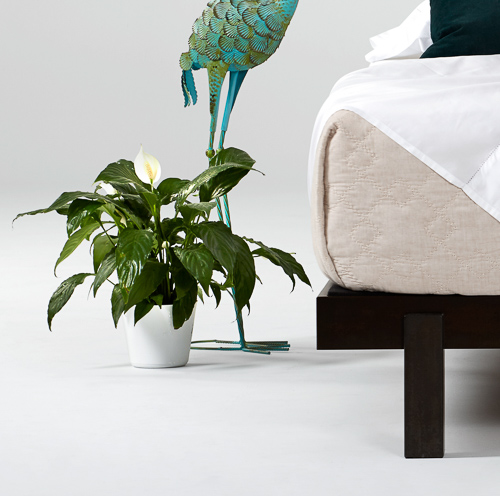
Peace Lily
For something with less maintenance, try a peace lily. It’s on NASA’s “Top Ten Household Air Cleaning Plants”, helping to keep a healthy environment, which is important when you spend entire nighttime sessions breathing in your bedroom air. They prefer light shade, and can even thrive in rooms with no windows. Best of all, it lets you know when it needs water- the leaves droop, and will perk back up once you water it.
https://ntrs.nasa.gov/search.jsp?ref=organicgglunkwn&prid=pfseogglunkwn&R=19930072988

Snake Plant
The snake plant is one of the most tolerant plants out there, perfect for bedrooms that may have less than ideal growing conditions. They’re great at cleaning toxins from the air, and can be left for weeks at a time and still survive. Make sure they’re in well draining soil, as they don’t need much water to survive. They can tolerate most lighting conditions.

Golden Pothos
The golden pothos is yet another workhorse of an air purifier, and looks beautiful in any bedroom. They like bright, indirect light when indoors, and need well draining soil. Let the soil dry out completely in between waterings. This is another one where the plant will tell you when it needs water, you’ll see the leaves drooping.

Fiddle-leaf Fig
If you’re a more advanced plant parent, and have a bright sunny bedroom, the ever popular fiddle-leaf fig is for you. It’s sure to be the focal point of any bedroom. Fiddles need bright, consistent light to thrive, and they need to be away from cold drafts. They need rich, well drained soil, and water only when soil is dry to the touch.

